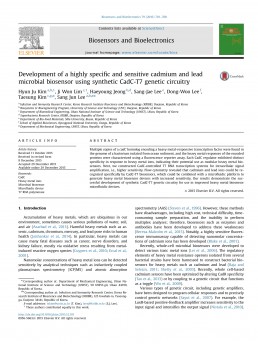Click the link above for more details.
Development of a highly specific and sensitive cadmium and lead microbial biosensor using synthetic CadC-T7 genetic circuitry
Abstract
Multiple copies of a cadC homolog encoding a heavy metal-responsive transcription factor were found in the genome of a bacterium isolated from ocean sediment, and the heavy metal responses of the encoded proteins were characterized using a fluorescence reporter assay. Each CadC regulator exhibited distinct specificity in response to heavy metal ions, indicating their potential use as modular heavy metal biosensors. Next, we constructed CadC-controlled T7 RNA transcription systems for intracellular signal amplification, i.e., higher sensitivity. Flow cytometry revealed that cadmium and lead ions could be recognized specifically by CadC-T7 biosensors, which could be combined with a microfluidic platform to generate heavy metal biosensor devices with increased sensitivity. Our results demonstrate the successful development of synthetic CadC-T7 genetic circuitry for use in improved heavy metal biosensor microfluidic devices.
CategoryPeer-reviewed PublicationsDate2015.12Linkwww.ncbi.nlm.nih.gov
